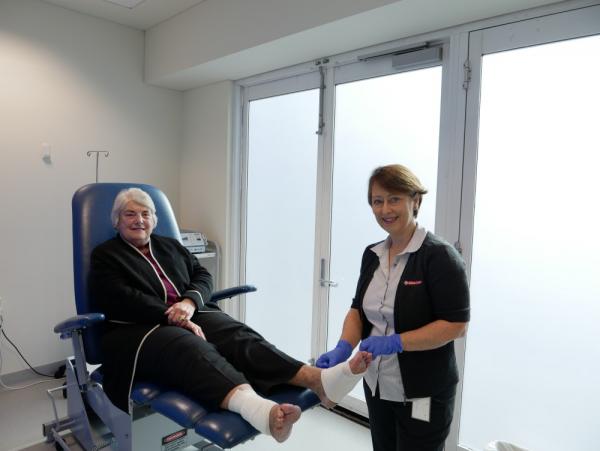- Home
- Latest news from Silverchain
- Silverchain eases wound pressure
Silverchain eases wound pressure
- Silverchain Group manages more than 37,000 wounds on 17,000 clients across Australia
- Silverchain Group provides Australia’s largest wound care service across three states: WA, NSW and QLD
- Half a million Australians suffer chronic wounds every year, costing the health system an estimated $3 billion.
At Silverchain Group, wound management is the largest core service delivered by our nursing teams around Australia. With a strong focus on research, our internationally-recognised wound service provides best practice care in the home.
In 2019, 750 highly trained registered nurses and enrolled nurses managed more than 37,000 wounds on 17,000 clients. By volume, Silverchain provides the largest wound care service in Australia. Of these wounds, 79 percent (more than 33,000) of all wounds, from all of our services, were discharged either healed or nearly healed, where clients could manage themselves. *

“On each visit, our nurses collect information about their assessment and management of their client’s wound. This data is collected on smartphones and entered into our specialised wound module, which allows us to monitor healing progress and benchmark our wound healing outcomes.
“Our nurses undergo evidence-based wound management education and clinical competency evaluation regularly. We are proud of our nurses with postgraduate qualifications in the field, which enables advanced wound practice and specialisation.”
West Australian grandmother, Carol Leach, has been treated by Silverchain’s wound service since 2016.
“Four years ago, a small vein in my right ankle burst,” she said. “I went to a vascular surgeon who said it would heal, but it didn’t. Then last year, I developed a leg ulcer. The pain was so intense it stopped me from sleeping.”
Carol suffers from an allergic autoimmune disorder, causing her to experience reactions to some wound dressings. She is also unable to wear pressure bandages due to her nerve pain.
“No doctors knew what to do with me – I wasn’t a ‘normal’ person with ulcers,” she said.
“But Silverchain did. They did their research and started treating me with manuka honey with gauze, before moving to a collagen-based dressing. I have more confidence in them than any doctors I see – they know wound care, and they understand unique needs, and that’s how they treated me.”
* Seventy-nine percent (more than 33,000) of all wounds across all care services were discharged healed or to self-care, which refers to almost healed. Fifty percent of all wounds are acute (that is related to surgery or trauma), and 50 percent are chronic wounds, such as leg and foot ulcers.
